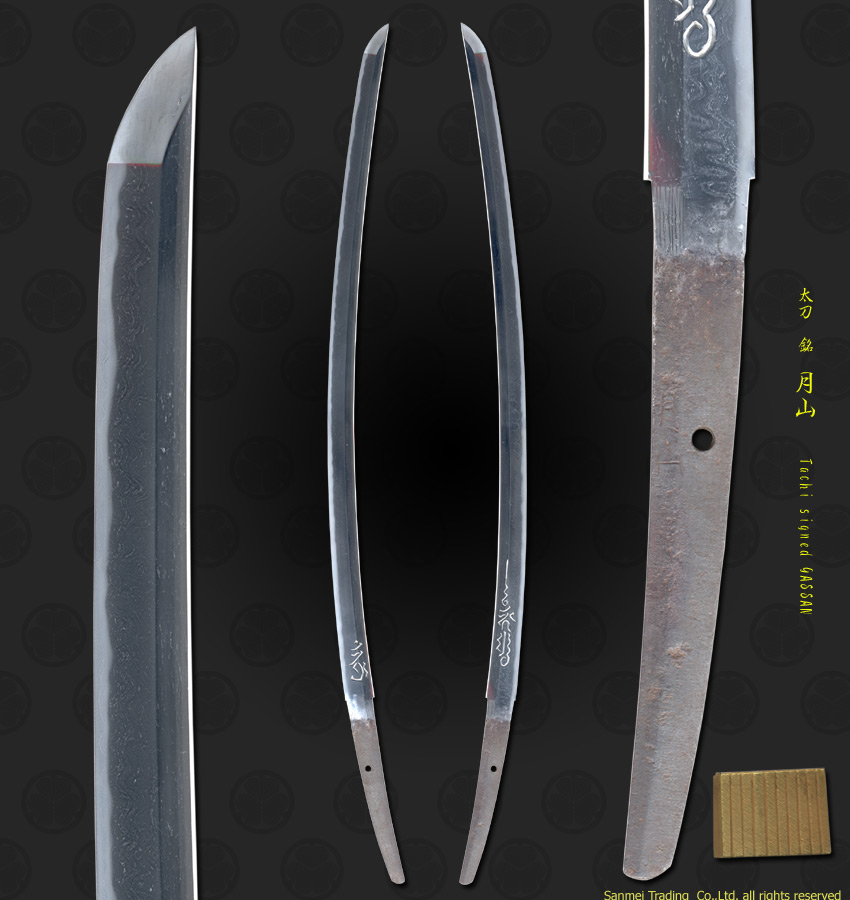Length of cutting edge69.2cm Curvature2.6cm Thickness of base7.5mm Width of base30.0mm Width of Yokote20.6mm
Kitae(forging pattern) : Kitae is conspicuous AYASUGI-hada (wavy grain) and Ji-nie(hard granules over the surface) works in response to wavy grain marks.
Hamon(tempering pattern) : Hamon is nie based a combination of suguha (straight out line) and small gunome (zigzag outline) Deep Nioi-kuchi and tempering edge is soaked with wet nioi. It is entwined with nie-lines that works in response to Ayasugi pattern. The entire blade is filled in with an atmosphere of ancient times.
Boshi (tip): Boshi is straight base, hakikake (brushing nie lines).
Nakago(tang) : UBU (unaltered) one Mekugi-ana (retaining hole). Kiri (horizontal file marks). Iriyama heel shape. The signature is located a upper, shinogi-ji, next to retaining hole, two small and old-fashioned character that reads GA-SSAN in Tachi-mei.
Tozan-do roads in koto period had been prospered since early Kamakura period, Houju and Mogusa school in Mutsu province and Gassan school in Dewa province followed since Nanbokucho period. These smiths would have close relations with Buddhist monk soldiers. A mecca of Gassan-school was a sacred mountain GASSAN. There is one of the oldest examples of Tachi signed Gassan, the date of year [the sixth year of Teiji/A.D.1367], however most of works were made during Muromachi period. This is a decent tachi which is UBU (unaltered). There is ample thickness and mihaba in base is wide with Funbari. Jigane is a typical AYASUGI-hada which is more outstanding than ordinary works of gassan. Hamon, although general works are straight out line, this tachi is mixing in with small gunome and the interior of temper is active with nie-lines that well out from forging pattern. The works of Gassan are usually conspicuous Ayasugi-hada therefore, there are some darkish grain marks in hakiura, 105mm above hamachi and ones under the habaki collar, those are major character and identification of Gassan school.
Gold foiled habaki collar, Shira-Saya plain wood mounting.
